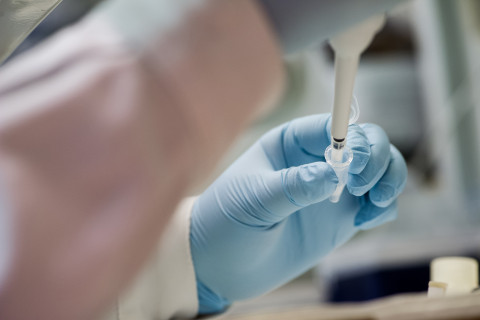Traumatic brain injury leads to reduced levels of neuronal miR-124-3p up to three months after the injury, according to the doctoral dissertation of Niina Vuokila, MSc.
Traumatic brain injury (TBI) occurs when the brain is subjected to an external force, most commonly during traffic accidents and falling. The primary injury initiates cellular and molecular changes that can lead to the development of secondary injury and post-traumatic comorbidies.
Among the candidate targets for intervention are microRNAs (miRNAs), small non-coding RNAs that act as master regulators of gene expression. The aims of this study were to study post-TBI changes in neuronal miR-124-3p, to investigate the miR-124-3p controlled molecular networks and their connection to post-TBI pathology and recovery process, as well as to evaluate possible targets for therapeutic intervention.
Lateral fluid-percussion injury (FPI) was used to induce TBI in adult, male Sprague-Dawley rats. The post-TBI expression of the miR-124-3p targets was detected from the dentate gyrus with microarray, and from the perilesional cortex with RNA-Seq at 3 months post-TBI. Expression of miR-124-3p was detected from the dentate gyrus with droplet digital PCR (ddPCR) at 3 months post-TBI, and from the perilesional cortex with quantitative reverse transcription PCR (qRT-PCR) at 7 days and 3 months post-TBI. Two of the targets, Plp2 and Stat3, were detected in the dentate gyrus with qRT-PCR, and Stat3 in the perilesional cortex. In situ hybridization was used to detect intracellular level of miR-124-3p in individual cells in the dentate gyrus and perilesional cortex. In situ hybridization combined with immunohistochemical staining with cellular markers and hematoxylin eosin staining was used to investigate the localization of miR-124-3p. To investigate if the observed changes are TBI specific, the level of miR-124-3p, Plp2 and Stat3 in the dentate gyrus was measured with microarray at 7 days after status epilepticus. Samples of the human dentate gyrus and perilesional cortex were used to compare post-TBI miR-124-3p expression in rats and humans. Bioinformatic methods (STRING, Reactome; Ingenuity Pathway analysis, L1000CDS2) were used to study the role of miR-124-3p controlled networks, and existing pharmaceutical compounds that could be used to modify them. To further study the connection between miR-124-3p and cortical pathologies, tail-vein blood samples were collected at 2 days post-TBI, and magnetic resonance imaging (MRI) was conducted at 2 months post-TBI.
Microarray on the dentate gyrus and RNA-Seq on the perilesional cortex showed upregulation of a portion of predicted targets of miR-124-3p, suggesting that TBI causes downregulation of miR-124-3p. The upregulation of Plp2 and Stat3 in the dentate gyrus and Stat3 in the cortex were confirmed with qRT-PCR. PCR analyses indicated that TBI causes downregulation of miR-124-3p in the dentate gyrus and perilesional cortex next to the necrotic core of the lesion. In situ hybridization confirmed the intracellular downregulation of miR-124-3p in both areas. Microarray on the dentate gyrus indicated that the level of the precursors of miR-124 were not affected by TBI, suggesting impairment in the maturation of miR-124. The analysis in the dentate gyrus pinpointed the dysregulation of miR-124-3p in the granule cell layer. Further on, our in situ hybridization with samples of TBI patients show that similarly to rats, TBI causes intracellular downregulation of miR-124-3p in humans. qRT-PCR and in situ hybridization suggest that similar changes occur in rat dentate gyrus after status epilepticus. Moreover, the cortices of sham operated controls had lower level of miR-124-3p in comparison to naïve animals, indicating that the loss of miR-124-3p is not TBI specific but rather a more general consequence of brain injuries. Bioinformatics analysis and text mining connected the targets of miR-124-3p to neuroinflammation and apoptosis. MRI analysis on the cortical athropy and perilesional inflammation revealed varied cortical pathologies. Linear regression model revealed that higher plasma level at acute time point after the induction of TBI explains the cortical lesion area at chronic time point, indicating that the miR-124-3p might relate to the cortical lesion development.
Together these findings indicate that brain injuries cause lasting impairment at the level of mature miR-124-3p in both rats and humans, that possibly contributes to post-injury hippocampal and cortical pathologies.
The doctoral dissertation of Niina Vuokila, Master of Science, entitled MiR-124-3p as a regulator of post-TBI recovery process, will be examined at the Faculty of Health Sciences. The Opponent in the public examination will be Docent Tiina Laitala of the University of Turku, and the Custos will be Professor Asla Pitkänen of the University of Eastern Finland. The public examination will be held online in English on 18 December 2020 starting at 12 noon.


